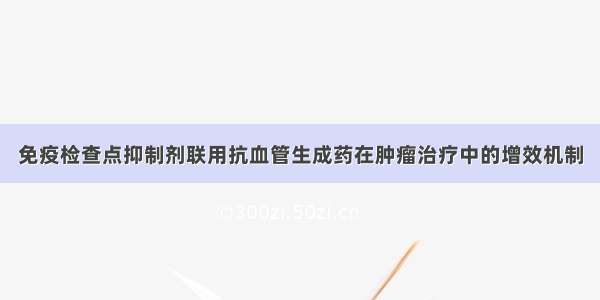
上个月,发表在Nature Communications(IF=14.919)上的一项研究指出,TNFRSF9激动剂与PD-L1联合使用可以有效地激活和扩增肿瘤特异性细胞毒性T细胞,增强对肿瘤的控制和杀伤[1]。近年来,TNFRSF9作为癌症和各种自身免疫性以及炎症性疾病的治疗靶点受到了广泛关注。然而,最近的研究表明,TNFRSF9及其配体TNFSF9之间的调控网络更为复杂,主要是由于它们之间的双向信号传导。TNFRSF9作为增强抗肿瘤免疫反应的潜力靶点,其背后的复杂机制引起了研究人员的兴趣。那么,TNFRSF9及其配体介导的信号通路是什么?TNFRSF9靶向治疗的潜在价值如何?今天,我们一起来了解一下。 1、TNFRSF9的结构和表达 2、TNFRSF9的配体 3、TNFRSF9和TNFSF9介导的信号传导机制 TNFRSF9信号传导机制 TNFSF9逆向信号传导机制 参考文献: [1] Geuijen, Cecile,et al. "A human CD137× PD-L1 bispecific antibody promotes anti-tumor immunity via context-dependent T cell costimulation and checkpoint blockade." Nature Communications 12.1 (): 1-19. [2] Lee, Seung-Woo, and Michael Croft. "4-1BB as a therapeutic target for human disease." Therapeutic Targets of the TNF Superfamily (): 120-129. [3] Eckstrum, Kirsten, and Brent M. Bany. "Tumor necrosis factor receptor subfamily 9 (Tnfrsf9) gene is expressed in distinct cell populations in mouse uterus and conceptus during implantation period of pregnancy." Cell and tissue research 344.3 (): 567-576. [4] Luu, Khang, Zhe Shao, and Herbert Schwarz. "The relevance of soluble CD137 in the regulation of immune responses and for immunotherapeutic intervention." Journal of leukocyte biology 107.5 (): 731-738. [5] Eckstrum, Kirsten, and Brent M. Bany. "Tumor necrosis factor receptor subfamily 9 (Tnfrsf9) gene is expressed in distinct cell populations in mouse uterus and conceptus during implantation period of pregnancy." Cell and tissue research 344.3 (): 567-576. [6] Cheuk, Adam TC, Ghulam J. Mufti, and Barbara-ann Guinn. "Role of 4-1BB: 4-1BB ligand in cancer immunotherapy." Cancer gene therapy 11.3 (): 215-226. [7] Deng, Guo-Min,et al. "Lupus serum IgG induces skin inflammation through the TNFRSF9 signaling pathway." The Journal of Immunology 184.12 (): 7154-7161. [8] Bitra, Aruna,et al. "Crystal structures of the human 4-1BB receptor bound to its ligand 4-1BBL reveal covalent receptor dimerization as a potential signaling amplifier." Journal of Biological Chemistry 293.26 (): 9958-9969. [9] Choi, Beom K., and Hyeon-Woo Lee. "The Murine CD137/CD137 Ligand Signalosome: A Signal Platform Generating Signal Complexity." Frontiers in Immunology 11 (): 3184. [10] Melero, Ignacio,et al. "Multi-layered action mechanisms of CD137 (4-1BB)-targeted immunotherapies." Trends in pharmacological sciences 29.8 (): 383-390. [11] Shuh, Maureen,et al. "Tumor necrosis factor-α: life and death of hepatocytes during liver ischemia/reperfusion injury." Ochsner Journal 13.1 (): 119-130. [12] Wu, Yongxia, Claudio Anasetti, and Xue-Zhong Yu. "T-Cell Costimulation and Coinhibition in Graft-Versus-Host Disease and Graft-Versus-Leukemia Effect." Immune Biology of Allogeneic Hematopoietic Stem Cell Transplantation. Academic Press, . 167-194. [13] Makkouk, Amani, Cariad Chester, and Holbrook E. Kohrt. "Rationale for anti-CD137 cancer immunotherapy." European journal of cancer 54 (): 112-119. [14] Shao, Zhe, and Herbert Schwarz. "CD137 ligand, a member of the tumor necrosis factor family, regulates immune responses via reverse signal transduction." Journal of leukocyte biology 89.1 (): 21-29. [15] Nedoszytko, Bogusaw,et al. "Pathogenesis of psoriasis in the “omic” era. Part II. Genetic, genomic and epigenetic changes in psoriasis." Advances in Dermatology and Allergology/Postpy Dermatologii i Alergologii 37.3 (): 283. [16] MMoh, Mei Chung,et al. "Tumor necrosis factor receptor 1 associates with CD137 ligand and mediates its reverse signaling." The FASEB Journal 27.8 (): 2957-2966 [17] Park, Sang Jun,et al. "Reverse signaling through the co-stimulatory ligand, CD137L, as a critical mediator of sterile inflammation." Molecules and cells 33.6 (): 533-537. [18] Kim, DongKu, Sang Chul Lee, and HyeonWoo Lee. "CD137 ligandmediated reverse signals increase cell viability and cytokine expression in murine myeloid cells: Involvement of mTOR/p70S6 kinase and Akt." European journal of immunology 39.9 (): 2617-2628. [19] Sun, Yonglian, Jonathan H. Chen, and Yangxin Fu. "Immunotherapy with agonistic anti-CD137: two sides of a coin." Cell Mol Immunol 1.1 (): 31-36. [20] Broll, Karin,et al. "CD137 expression in tumor vessel walls: high correlation with malignant tumors." American journal of clinical pathology 115.4 (2001): 543-549 [21] Zhe, Shao. "Characterization of murine soluble CD137 and its biological activities." (). [22] Glorieux, Christophe, and Peng Huang. "Regulation of CD137 expression through K-Ras signaling in pancreatic cancer cells." Cancer Communications 39.1 (): 1-11. [23] Wang, Jun,et al. "CD137-mediated pathogenesis from chronic hepatitis to hepatocellular carcinoma in hepatitis B virus-transgenic mice." The Journal of Immunology 185.12 (): 7654-7662. [24] Seo, Su K.,et al. "Blocking 4-1BB/4-1BB ligand interactions prevents herpetic stromal keratitis." The Journal of Immunology 171.2 (): 576-583. [25] Thum, Elaine, Zhe Shao, and Herbert Schwarz. "CD137, implications in immunity and potential for therapy." Front Biosci 14 (): 4173-4188.
















